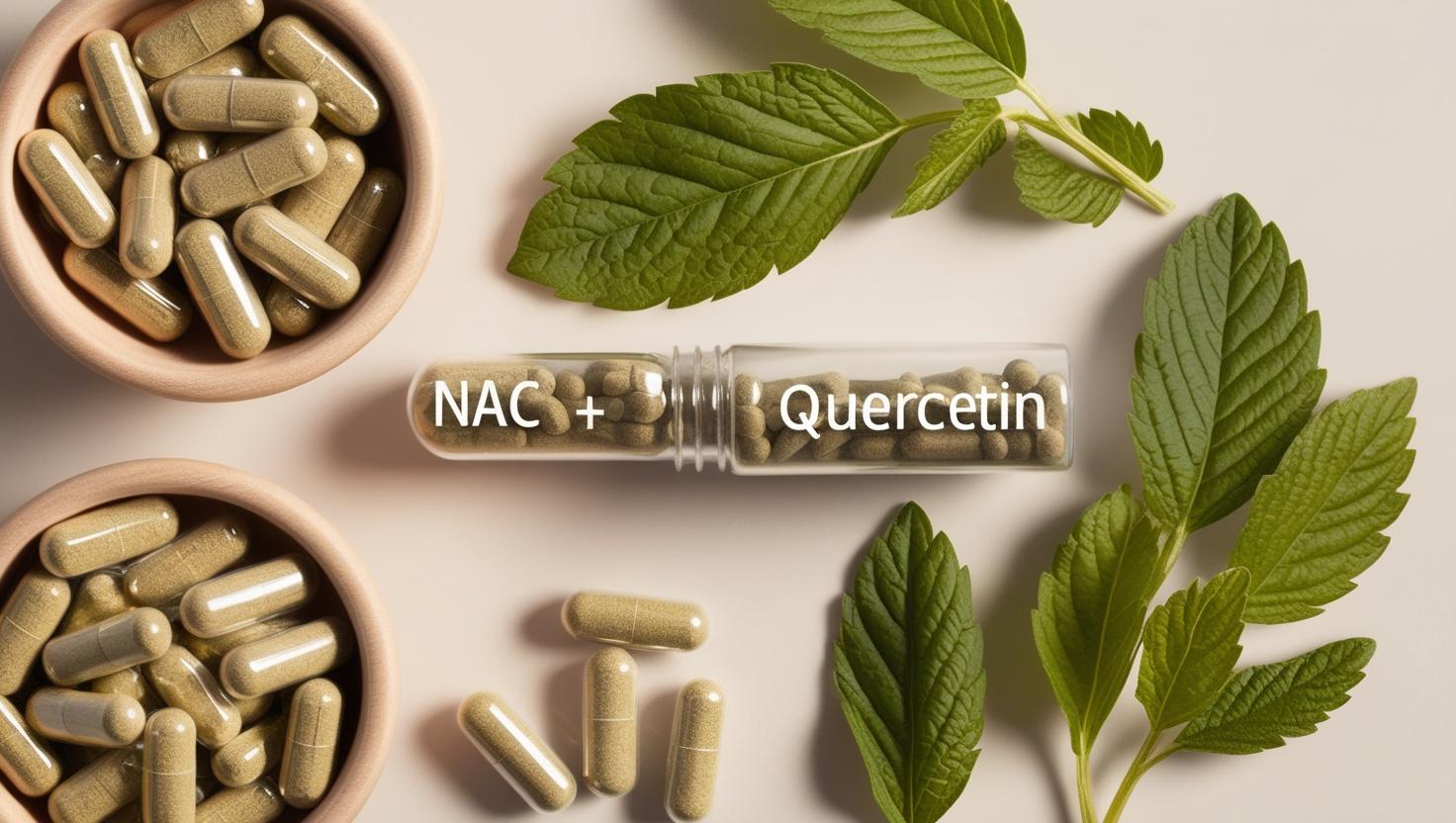
If there’s one thing I’ve learned on my health journey, it’s that listening to your body is essential—even when it’s inconvenient. For years, I thought my garlic sensitivity was limited to raw garlic. A few bites and I’d have a pounding migraine within the hour. But recently, even cooked garlic and garlic powder have become triggers, leaving me with debilitating headaches that forced me to reevaluate everything I thought I knew about my body. Egg whites are another challenge, bringing on sinus congestion and postnasal drip every time I eat them. Frustrated but determined, I’ve taken a deep dive into understanding why these reactions happen and what I can do to fix them.
That’s where Quercetin Lipomicel Matrix and N-Acetyl Cysteine (NAC) come in. I’m early in this new routine, but these supplements are already showing promise. Let me share what I’ve learned about histamine sensitivities, why quercetin and NAC work, and how they’re starting to help me.
Histamine is a natural compound involved in immune responses, digestion, and even brain function. Normally, the body produces and breaks down histamine efficiently. But when histamine builds up—whether from eating high-histamine foods, impaired metabolism, or overproduction—it can cause a range of symptoms. Think sinus congestion, headaches, skin rashes, and digestive discomfort.
For me, histamine overload is tied directly to my food sensitivities:
Egg Whites: Eating them triggers immediate sinus congestion and postnasal drip. This reaction is likely due to histamine released by mast cells in response to egg white proteins like ovalbumin.
Garlic: Migraines used to be limited to raw garlic, but now even cooked garlic or garlic powder is enough to set me off. Research suggests that sulfur compounds in garlic, like allicin, can irritate the nervous system and exacerbate histamine-related inflammation.
Quercetin is a natural flavonoid found in foods like apples, onions, and berries. It’s celebrated for its antioxidant, anti-inflammatory, and antihistamine properties. For someone like me, who struggles with histamine overload, quercetin has become a key ally.
Not all quercetin supplements are created equal. Traditional forms are poorly absorbed by the body, but the Lipomicel Matrix uses advanced delivery technology to improve bioavailability. Since starting this specific form, I’ve already noticed subtle shifts, like less sinus pressure after accidental exposures.
Mast Cell Stabilization: Quercetin prevents mast cells from releasing histamine, reducing allergic reactions.
Anti-Inflammatory Properties: It soothes inflammatory pathways, easing systemic irritation.
Antioxidant Support: Quercetin neutralizes free radicals, protecting cells from damage caused by oxidative stress.
NAC is a precursor to glutathione, one of the body’s most powerful antioxidants. It’s widely used for its ability to support liver detoxification, respiratory health, and immune balance. For histamine sensitivities, NAC offers specific benefits by reducing oxidative stress and aiding in histamine metabolism.
Boosting Glutathione Production: Glutathione helps detoxify histamine and inflammatory compounds. NAC supports glutathione synthesis, making it easier for the body to process excess histamine.
Reducing Oxidative Stress: Histamine reactions often increase oxidative stress, amplifying symptoms. NAC helps mitigate this damage.
Respiratory Support: NAC’s ability to thin mucus has been invaluable for managing sinus-related symptoms.
Although I’m only a few weeks into using quercetin and NAC, the results are encouraging. Here’s what I’ve observed:
Sinus Relief: Quercetin has started to reduce the congestion and postnasal drip that come with eating eggs. It’s subtle but noticeable.
Fewer Migraines: NAC is making a difference with garlic triggers. While I still avoid garlic entirely, my body seems more resilient during accidental exposures.
Hope for the Long Term: It’s too early to declare victory, but I’m optimistic that these supplements, combined with dietary adjustments, will help me regain control over my histamine responses.
If you’re exploring these supplements for histamine sensitivities, here are some tips based on my experience:
Start with Quercetin: I take the Lipomicel Matrix version twice daily with meals. Its enhanced bioavailability ensures I’m absorbing it effectively.
Add NAC Slowly: I started with 600 mg per day and gradually increased to 1200 mg, taken on an empty stomach for optimal absorption.
Focus on the Bigger Picture: Supplements are part of a larger strategy. A low-histamine diet, gut health support, and stress management are all critical for long-term improvement.
Living with histamine sensitivities isn’t easy, but it has pushed me to understand my body on a deeper level. Quercetin and NAC are giving me tools to address the root causes, not just the symptoms, and I’m starting to feel more optimistic about my health.
If you’re struggling with similar challenges, I encourage you to look into these supplements. Always consult with a healthcare provider before starting anything new, but don’t underestimate the power of small, consistent steps toward healing.